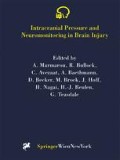Summary
A harmful effect of prolonged hyperventilation on outcome has been shown in comatose patients after severe head injury. The purpose of this study was to assess the acute effect of moderate hyperventilation for treatment of intracranial hypertension (ICP < 20mmHg) on invasively measured brain tissue-PO2 (PtiO2), PCO2 (PtiCO2) and pH (tipH) in severely head injured patients.
15 severely head injured patients (GCS ≤ 8) were prospectively studied. Intracranial pressure (ICP), mean arterial blood pressure (MABP), cerebral perfusion pressure (CPP), endtidal CO2 (ETCO2), PtiO2, PtiCO2 and tipH (Paratrend or Licox microsensors) were continuously recorded using multimodal monitoring. Following a baseline period of 15 minutes, patients were hyperventilated for 10 minutes. Arterial blood gas analysis was done before, during and after hyperventilation. At least three hyperventilation maneuvers were performed per patient. For statistical analysis the Friedman test was used.
Hyperventilation (paCO2: 32.4 ± 0.6 to 27.7 ± 0.5 mmHg) significantly reduced ICP from 25.3 ± 1.5 to 14.2 ± 1.9mmHg (p < 0.01). As a consequence, CPP increased by 9.6 ± 3.4mmHg to 76.8 ± 3.2mmHg. Brain tissue PCO2 decreased from 37.5 ± 1.3 to 34.6 ± 1.2 while tipH increased from 7.13 to 7.16. In all patients, hyperventilation led to a reduction of brain tissue PO2 (PtiO2 / Licox: 24.6 ± 1.4 to 21.9 ± 1.7mmHg, n.s.; PtiO2 / Paratrend: 35.8 ± 4.3 to 31.9 ± 4.0mmHg, n.s.). In one case hyperventilation even had to be stopped after 7 min because the drop in brain tissue PO2 below 10 mmHg signalized imminent hypoxia.
As well known, hyperventilation improves CPP due to a reduction in ICP. However, this does not ameliorate cerebral oxygenation as demonstrated by the decrease in PtiO2. This underlines that hyperventilation should only be used with caution in the treatment of intracranial hypertension.
Access this chapter
Tax calculation will be finalised at checkout
Purchases are for personal use only
Preview
Unable to display preview. Download preview PDF.
References
Caron MJ, Kelly DF, Shalmon E, et al (1996) Intensive management of traumatic brain injury. In: Wilkins RH, Rengachary SS (eds) Neurosurgery. McGraw-Hill, New York, pp 2699–2708
Marshall LF, Marshall SB (1987) Medical management of intracranial pressure. In: Cooper PR (ed) Head injury. Williams and Wilkins, Baltimore, pp 177–196
Bouma G, Muizelaar JP (1992) Cerebral blood flow, cerebral blood volume, and cerebrovascular reactivity after severe head injury. J Neurotrauma 9 [Suppl 1]: S333
Barie P, Ghajar J, Rirlik A, et al (1993) Contribution of increased cerebral blood volume to posttraumatic intracranial hypertension. J Trauma 35: 88
Vanicky I, Marsala N, Murar J, et al (1992) Prolonged postishemic hyperventilation reduces acute neuronal damage after fifteen minutes of cardiac arrest in the dog. Neurosci Lett 135:167
Muizelaar JP, Marmarou A, Ward JD, et al (1991) Adverse effect of prolonged hyperventilation in patients with severe head injury: a randomized clinical trial. J Neurosurg 75: 731–739
Muizellar JP, Poel van der H, Li Z, et al (1988) Pial arteriolar vessel diameter and CO2 reactivity during prolonged hyperventilation in the rabbit. J Neurosurg 69: 923–927
Yoshida K, Marmarou A (1991) Effects of tromethamine and hyperventilation on brain injury in the cat. J Neurosurg 74: 87–96
Fortune JB, Feustel PJ, de Luna C, et al (1995) Cerebral blood flow and blood volume in response to O2 and CO2 changes in normal humans. J Trauma 39: 463–472
Venkatesh B, Clutton-Brock TH, Hendry SP (1994) Continuous measurement of blood gases using a combined electrochemical and spectrophotometric sensor. J Med Engin Technol 18: 165–168
Chan KH, Dearden NM, Miller JD, et al (1993) Multimodality monitoring as a guide to treatment of intracranial hypertension after severe brain injury. Neurosurgery 32: 547–553
Bouma GJ, Muizelaar JP, Choi SC, et al (1991) Cerebral circulation and metabolism after severe traumatic brain injury: the elusive role of ischemia. J Neurosurg 75: 685–693
Jenkins LW, Moszynski K, Lyeth BG, et al (1989) Increased vulnerability of the mildly traumatized rat brain to cerebral ischemia: the use of controlled secondary ischemia as a research tool to identify common or different mechanisms contributing to mechanical and ischemic brain injury. Brain Res 477: 211–224
Author information
Authors and Affiliations
Editor information
Editors and Affiliations
Rights and permissions
Copyright information
© 1998 Springer-Verlag Wien
About this paper
Cite this paper
Schneider, GH., Sarrafzadeh, A.S., Kiening, K.L., Bardt, T.F., Unterberg, A.W., Lanksch, W.R. (1998). Influence of Hyperventilation on Brain Tissue-PO2, PCO2, and pH in Patients with Intracranial Hypertension. In: Marmarou, A., et al. Intracranial Pressure and Neuromonitoring in Brain Injury. Acta Neurochirurgica Supplements, vol 71. Springer, Vienna. https://doi.org/10.1007/978-3-7091-6475-4_20
Download citation
DOI: https://doi.org/10.1007/978-3-7091-6475-4_20
Publisher Name: Springer, Vienna
Print ISBN: 978-3-7091-7331-2
Online ISBN: 978-3-7091-6475-4
eBook Packages: Springer Book Archive

